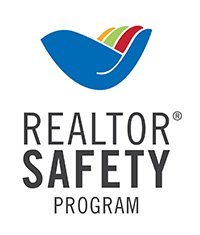
ABOUT THE REALTOR® SAFETY PROGRAM
Knowledge. Awareness. Empowerment. These are the core components of REALTOR® Safety. And helping our members and consumers understand the risks they face can mean the difference between life and death.
Follow these tips, adapted from the National Association of Realtors’® REALTOR® Safety Resource Kit.
- Don’t be too public; keep it professional
Limit the amount of personal information you share. Consider advertising without using your photograph in print, online, or on business cards. If you include a photograph, don’t use alluring or provocative images. Don’t use your full name with middle name or initial. Use your office address—or list no address at all. Giving out too much of the wrong information can make you a target.
- Open house: it ain’t over till it’s over
Don’t assume that everyone has left the premises at the end of an open house. Check all of the rooms and the backyard prior to locking the doors. Be prepared to defend yourself, if necessary. - Stranger danger
Tell your clients not to show their home by themselves. Alert them that not all agents, buyers and sellers are who they claim to be. Predators come in all shapes and sizes. Tell your sellers not to talk to other agents or buyers, and to refer all inquiries to you. - Bring up the rear
When showing a home, always have your prospects walk in front of you. Don’t lead them, but rather, direct them from a position slightly behind them. You can gesture for them to go ahead of you and say, for example, “The master suite is in the back of the house.”
- Got cell service, everywhere?
When you’re showing commercial property, thick walls and/or remote locations may interfere with mobile phone reception. Check in advance to be sure your phone is serviceable in the area in which you are showing the property.
- Hide personal information
Tell your sellers: DON’T leave personal information like mail or bills out in the open where anyone can see it. Lock down computers and lock up laptops and any other expensive, easy-to-pocket electronics before your showing. - Agree on an office distress code
Create a word or phrase that is not commonly used, but can be worked into any conversation for situations where you feel that you are in danger. Example: “Hi, this is Jennifer. I’m with Mr. Henderson at the Elm Street listing. Could you e-mail me the property’s RED FILE?” - Have your excuse ready
Part of being prepared to deal with a threatening situation is having an “out.” Prepare a scenario in advance so that you can leave—or you can encourage someone who makes you uncomfortable to leave. Examples: Your cell phone went off and you have to call your office; you left some important information in your car; or another agent with buyers is on her way. - Nothing personal…
When talking to clients and prospects, be friendly but still keep your personal information private. This means avoiding mention of where you live, your after-work or vacation plans, and similar details. - Carry less
If you carry a purse, lock it in your car trunk before arriving at an appointment. Carry only non-valuable business items (except for your cell phone), and do not wear expensive jewelry or watches, or appear to be carrying large sums of money. - Don’t get parked in
When showing property or meeting someone, park your car in front of the property rather than in the driveway. You will avoid having your car blocked in, you’ll have an easier time escaping in your vehicle, and you will be more likely to attract attention if you need to flee from a dangerous situation. - Plan ahead with escape routes
Upon entering an open house property for the first time, check each room and determine at least two “escape” routes. Make sure all deadbolt locks are unlocked for easy access to the outside.
Visit nar.realtor/safety to find additional tips, a broker safety toolkit, training videos and other resources.

